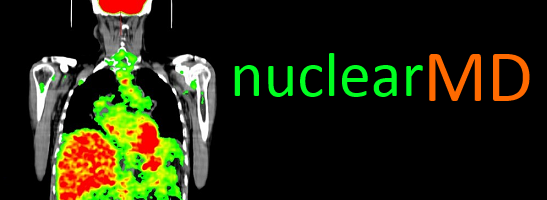Breast Implant Attenuation
Patient is a 42 yrs old Asian woman who presented with chest pain and dysnea. Myocardial perfusion imaging was performed using a one day protocol and exercise stress. She exercised on treadmill following Bruce protocol for 3:46 minutes. Resting heart rate of 66 beats per minute rose to 158 beats per minute, 87 % predicted maximum heart rate. She received 0.37 GBq (10.0 mCi) Tc-99m Sestamibi IV at rest and 1.11 GBq (30.0 mCi) Tc-99m Sestamibi IV at stress.

The images do not show any reversible perfusion defects to suggest exercise induced myocardial ischemia. There is a moderately severe, fixed, myocardial perfusion defect involving the anterior wall of the left ventricle, worse at rest. These findings are characteristic of a breast implant attenuation artifact. The MIP images show a photopenic implant in the left breast, in the left anterior oblique projection.
Recognition of artifact is important for the accurate interpretation of myocardial perfusion images. Breast implants are one of the known causes of attenuation artifacts in myocardial perfusion scintigraphy studies in women. By attenuating the counts from the anterior wall of the left ventricle, the implants cause a fixed perfusion defect, which may lead to misinterpretation of the study (1-3).
References:
1. Curtiss T. Stinis, Paul E. Lizotte, Mohammad-Reza Movahed. Impaired myocardial SPECT imaging secondary to silicon- and saline-containing breast implants. The International Journal of Cardiovascular Imaging (2006) 22: 449–455.
2. Movahed MR. Attenuation artifact during myocardial SPECT imaging secondary to saline and silicone breast implants. Am Heart Hosp J. 2007 Summer; 5(3):195-6.
3. Meine TJ, Patel MR, Heitner J, Fortin TA, Pagnanelli RA, Gehrig TR, Kim R, Borges-Neto S. Cardiac imaging impaired by a silicone breast implant. Clin Nucl Med. 2005 Apr; 30(4):262-4.
This case was compiled by Dr. Amin Samarghandi (Excel Diagnostics)
